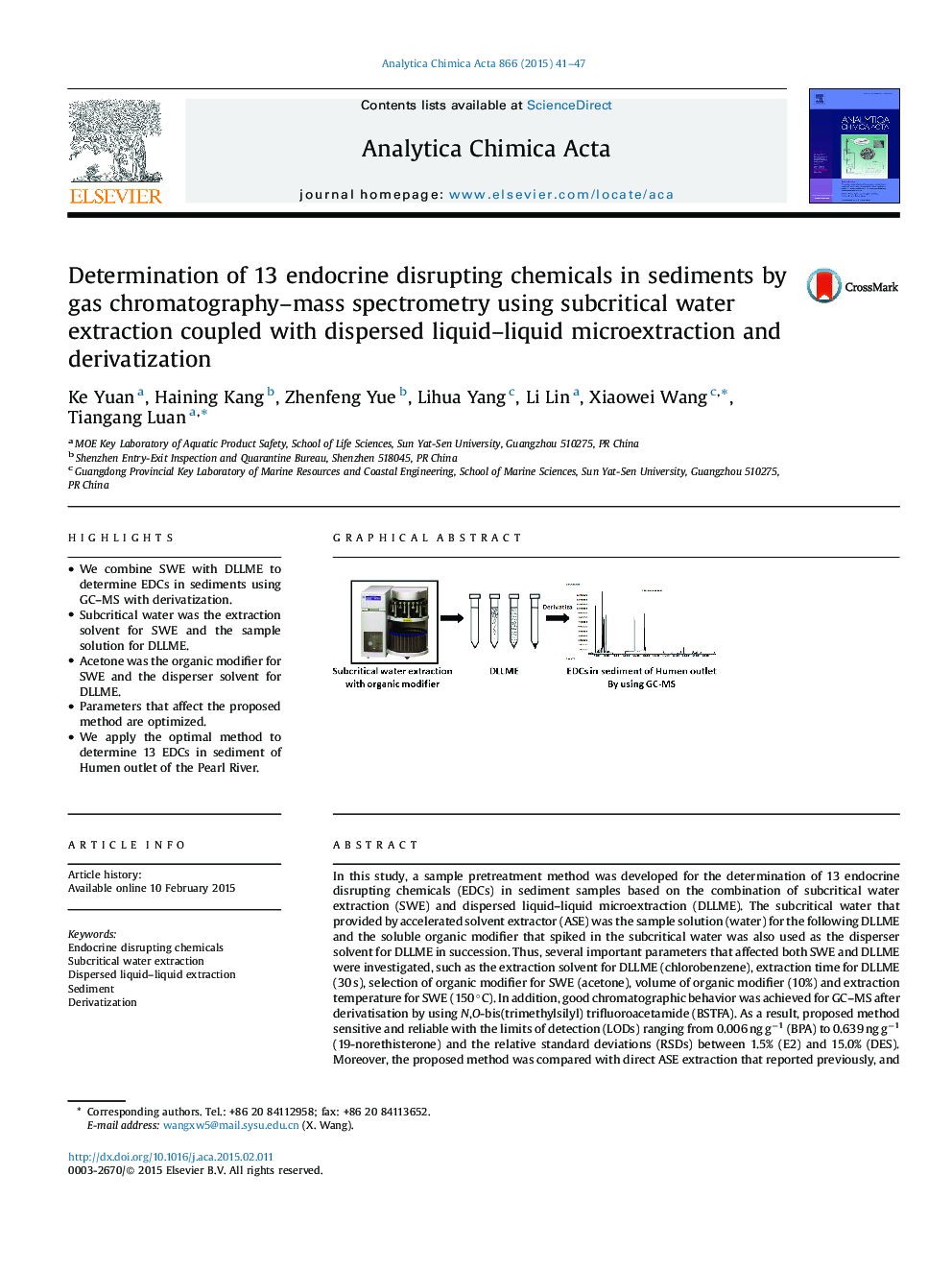| کد مقاله | کد نشریه | سال انتشار | مقاله انگلیسی | نسخه تمام متن |
|---|---|---|---|---|
| 1163942 | 1490966 | 2015 | 7 صفحه PDF | دانلود رایگان |
• We combine SWE with DLLME to determine EDCs in sediments using GC–MS with derivatization.
• Subcritical water was the extraction solvent for SWE and the sample solution for DLLME.
• Acetone was the organic modifier for SWE and the disperser solvent for DLLME.
• Parameters that affect the proposed method are optimized.
• We apply the optimal method to determine 13 EDCs in sediment of Humen outlet of the Pearl River.
In this study, a sample pretreatment method was developed for the determination of 13 endocrine disrupting chemicals (EDCs) in sediment samples based on the combination of subcritical water extraction (SWE) and dispersed liquid–liquid microextraction (DLLME). The subcritical water that provided by accelerated solvent extractor (ASE) was the sample solution (water) for the following DLLME and the soluble organic modifier that spiked in the subcritical water was also used as the disperser solvent for DLLME in succession. Thus, several important parameters that affected both SWE and DLLME were investigated, such as the extraction solvent for DLLME (chlorobenzene), extraction time for DLLME (30 s), selection of organic modifier for SWE (acetone), volume of organic modifier (10%) and extraction temperature for SWE (150 °C). In addition, good chromatographic behavior was achieved for GC–MS after derivatisation by using N,O-bis(trimethylsilyl) trifluoroacetamide (BSTFA). As a result, proposed method sensitive and reliable with the limits of detection (LODs) ranging from 0.006 ng g−1 (BPA) to 0.639 ng g−1 (19-norethisterone) and the relative standard deviations (RSDs) between 1.5% (E2) and 15.0% (DES). Moreover, the proposed method was compared with direct ASE extraction that reported previously, and the results showed that SWE–DLLME was more promising with recoveries ranging from 42.3% (dienestrol) to 131.3% (4,5α-dihydrotestosterone), except for diethylstilbestrol (15.0%) and nonylphenols (29.8%). The proposed method was then successfully applied to determine 13 EDCs sediment of Humen outlet of the Pearl River, 12 of target compounds could be detected, and 10 could be quantitative analysis with the total concentration being 39.6 ng g−1, and which indicated that the sediment of Humen outlet was heavily contaminated by EDCs.
Figure optionsDownload as PowerPoint slide
Journal: Analytica Chimica Acta - Volume 866, 25 March 2015, Pages 41–47
